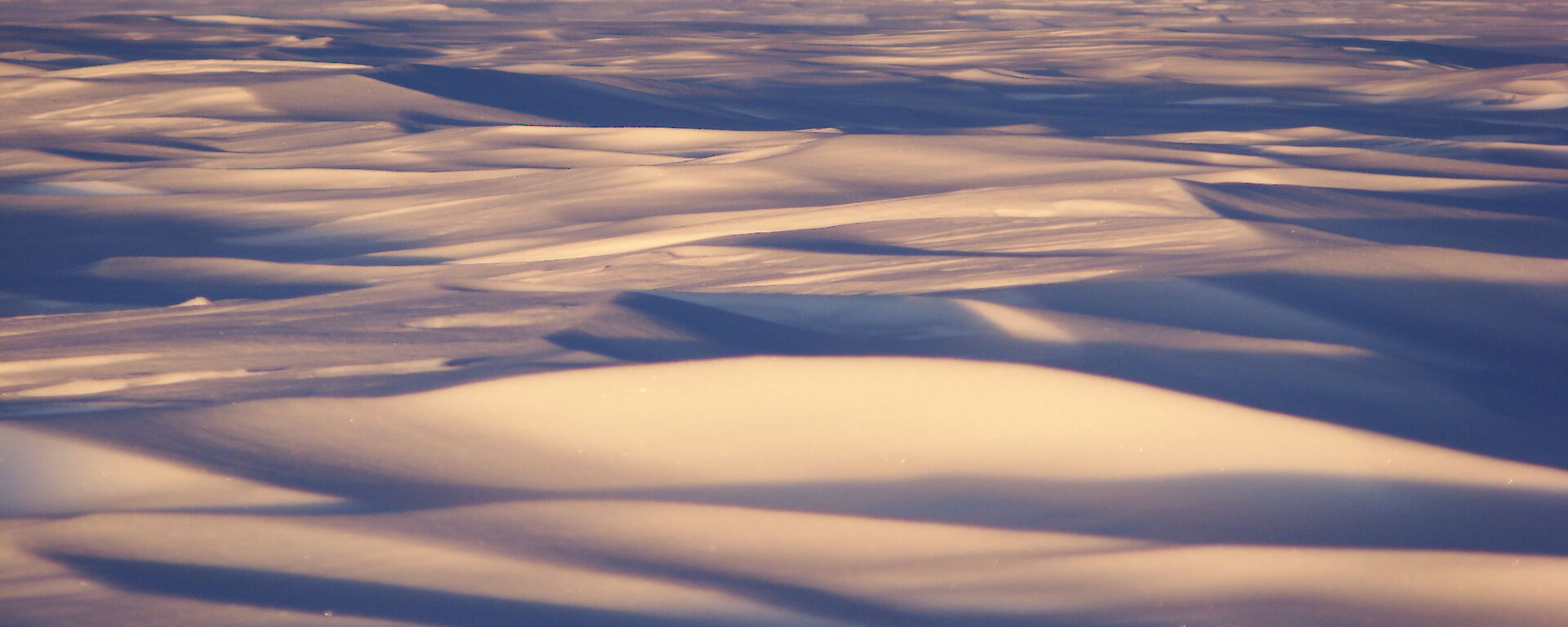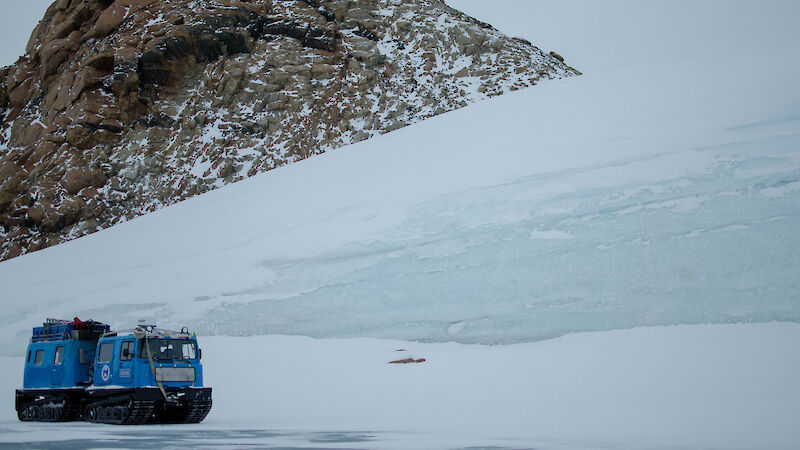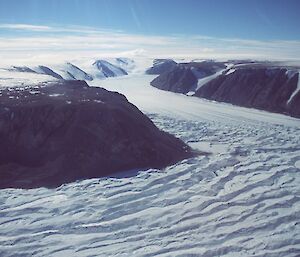Without the its ice, Antarctica may be the lowest lying continent. The greatest known depression of bedrock – the Byrd Subglacial Basin – lies at 2,538 m below sea level. Only about 0.4% of Antarctica is not covered by ice.
Lakes occur in inland ice free areas, some with water over 13 times more saline than sea water and freezing points as low as −18ºC (seawater normally freezes at −1.8ºC). Some lakes are warm with temperatures near the bottom as high as 35ºC.
Because of the continent’s remoteness, Antarctic ice is very pure and small traces of impurities are readily detectable. Bound into the ice is a unique environmental record that stretches back more than 200,000 years. Core samples of the ice, and the air that was trapped when it fell as snow, provide a continual historic record of the earth’s climate and other variables such as changes in atmospheric gas composition and volcanic fallout.
A major focus of Australia’s ice sheet research has been in the Lambert Glacier basin near the Prince Charles Mountains. The Lambert Glacier is the world’s largest glacier, at about 40 km wide and 400 km long. This system drains 10% of the Antarctic ice sheet. Icebergs up to 20 times the size of Uluru (Ayers Rock) calve off the glacier into Prydz Bay. The largest iceberg recorded measured approximately 335 km by 97 km.
90% of the world’s ice (26.6 million cubic kilometres) and approximately 91% of its fresh water, is locked up in the Antarctic ice sheet. If all the ice were to melt, the level of the world’s oceans would rise by nearly 60 m. However, the response of the ice sheet to global warming is the largest unknown in projecting future sea level over the next 100 to 1,000 years.
If the weight of the ice were removed it is estimated that the underlying rock would rise on average by 1,000 m. This process – known as isostatic uplift – would take many tens of thousands of years. Without the ice we would see the single mass of East Antarctica and a smaller archipelago of rugged mountainous islands – West Antarctica.
Antarctica has not always been the icy, apparently barren continent it now is. In the distant past it lay in the northern hemisphere. As recently as 2.5 to 3 million years ago, when the South Pole was where it is now, vegetation similar to the Tasmanian cold temperate rainforests grew near the Pole. Fossil leaves and wood have been preserved in rocks. Fossil dinosaurs and marsupials have also been found in Antarctica, The continent of Antarctica has yielded some of the world’s most ancient rocks, with the older ones being over 3 billion years old. They formed under very high-pressure and high-temperature conditions at great depth. These rocks occur in Enderby Land and various other places.
Australia has collected data on ice flow, ice thickness and other ice sheet characteristics in East Antarctica for over 50 years. These data allow researchers to calibrate and validate new satellite measurements of the ice sheet and to develop models used to project the ice sheet’s response to climate change. The intense cold of the Antarctic ice sheet affects the global climate system through changes in surface energy and moisture, clouds, precipitation, and atmospheric and ocean circulation.




